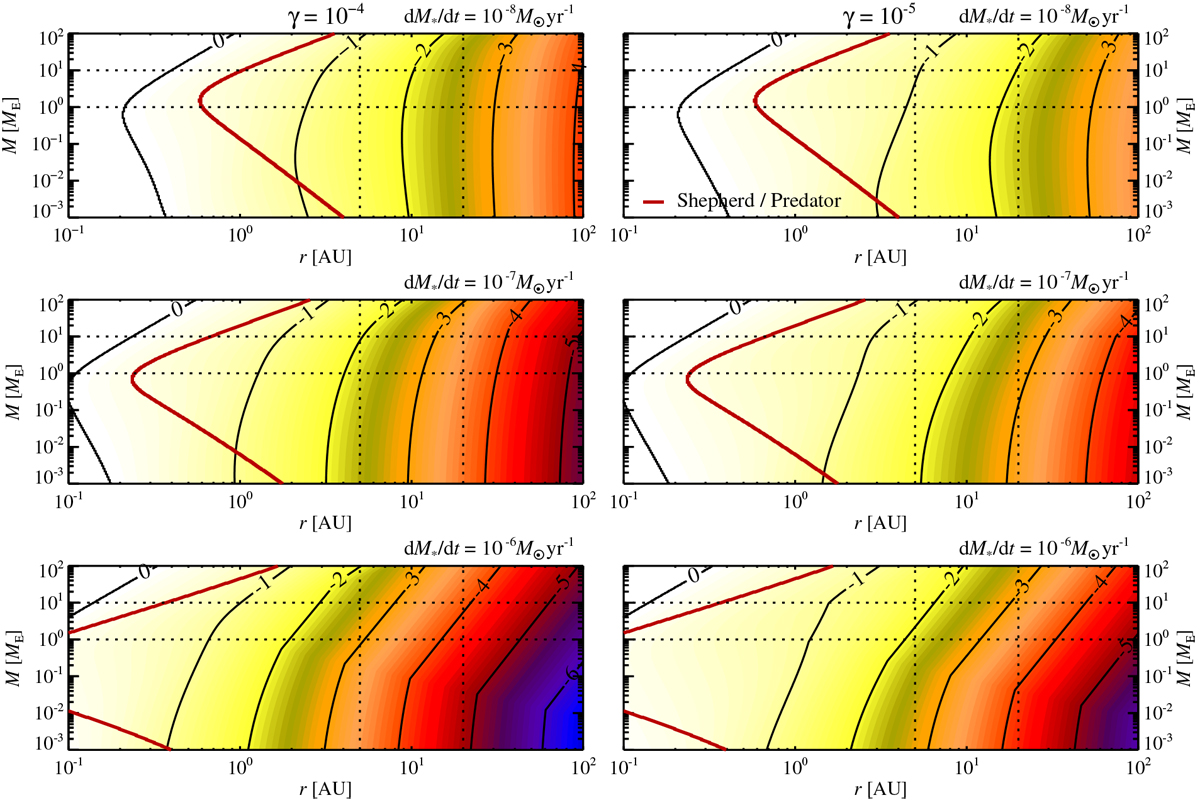Fig. 1

Accretion efficiency of a protoplanet accreting planetesimals of radius 50 km and for weak turbulent stirring (γ = 10−4, left plots) and very weak turbulent stirring (γ = 10−5, right plots) as a function of the distance from the star and the protoplanet mass. The three rows show the accretion efficiency for three different increasing (top to bottom) values of the mass accretion rate through the disc; the gas surface density in turn defines the equilibrium inclination of the planetesimals and the transition of the protoplanet from an accreting predator (exterior of the red line) to a non-accreting shepherd (interior of the red line). The parameter region of core formation in the solar system (the box made by 5 and 20 AU and by 1 and 10 ME) is marked with dashed lines. The accretion efficiency beyond 5 AU lies at a value of a few percent or lower for the case of weak turbulent stirring, while lowering the turbulent stirring to γ = 10−5 increases the efficiency by approximately a factor 3. The efficiency overall increases with decreasing gas accretion through the disc because more slowly migrating planets accrete a higher fraction of the planetesimals that they migrate through (even though the planetesimal inclinations increase slightly as the gas drag is reduced).
Current usage metrics show cumulative count of Article Views (full-text article views including HTML views, PDF and ePub downloads, according to the available data) and Abstracts Views on Vision4Press platform.
Data correspond to usage on the plateform after 2015. The current usage metrics is available 48-96 hours after online publication and is updated daily on week days.
Initial download of the metrics may take a while.


